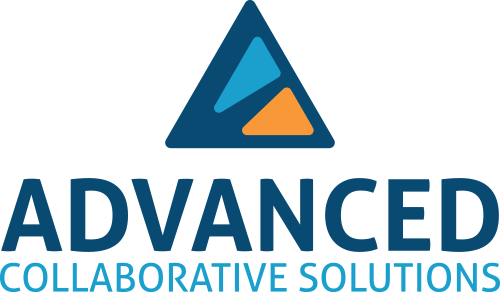Launching Achievement Teams in the Spring – Too Late or Just in Time?

By: Steve Ventura
Better late than never or better late, period? While it’s reasonable to assume that instructional and professional development initiatives should start at the beginning of the school year, it’s worth exploring the possibility that a spring launch could set the stage for a spectacular start to school come fall. If you are a leader who worries they missed the boat on establishing strong Achievement Teams this school year, not to worry! There are plenty of reasons to launch Achievement Teams this spring. Read on to figure out how.
Why Bother Launching Achievement Teams in the Spring?
Educators put a lot of eggs into the proverbial “next school year” basket. In fact, after months of kicking the can down the road toward the fall semester, many teachers and teams quickly find themselves overwhelmed by new initiatives, processes, and goals once August and September roll around. Why wait another moment to start an initiative that promises to build collective teacher efficacy and strengthen student achievement? Below are just a few of the reasons why a spring Achievement Teams launch could be the solution your team needs.
A spring Achievement Teams launch…
- Builds an “experimentation” mindset. Educators are often perfectionists and studies have shown that perfectionistic tendencies can lead to faster teacher burnout and impact teacher retention. How do you support a perfectionistic teacher? One way is to give them opportunities to experiment, reflect, and reiterate. By launching lower-stakes Achievement Teams in the spring, you provide a runway for teacher teams to “pilot” the protocol, refine their practices, and feel more confident and equipped to launch strong ATs in the fall.
- Provides structure to what can feel like a very unstructured time of year. They call it “spring fever” for a reason. With warming weather, more daylight, disrupted schedules from testing, and anticipation for summer, it’s understandable why students may fall victim to the malaise that often comes with the spring semester. By zeroing in on bite-size learning goals and clear instructional strategies, Achievement Teams arm educators with effective tools to combat students’ “spring fever,” keep instructional time focused, and give educators clear targets for learning.
- Sets the stage for a strong start in the fall. Make it known that a soft spring launch will allow teams to hone their skills for more impactful work in the fall. As you note lessons learned, obstacles faced, and small wins, your team will be ready to start their collaboration even stronger in the new school year. With months of practice leveraging the Achievement Teams framework in the spring, teams will have already established strong processes, protocols, and norms and can jump straight into data-driven work in the fall.
- Provides data-driven insights to inform next year’s curricular shifts, student placement decisions, and instructional changes. Having an accurate pulse on student performance as well as quality of instruction and curricular resources in the spring allows teams to make smart decisions that set everyone up for success in the fall. Using the data Achievement Teams protocols focus on, it’s easy to discern standards worth intentionally focusing or spending more time on, students in need of specific classroom placements next school year, or instructional strategies to ditch or adopt in order to strengthen learning outcomes.
The list of benefits for a spring Achievement Teams launch could go on, but let’s shift toward HOW you and your team can implement ATs successfully now, rather than later.
4 Ways to Successfully Launch Achievement Teams in the Spring
Starting any kind of new initiative can feel daunting, particularly midyear when schedules, habits, and routines are already established. Try the below four strategies to kick off your Achievement Teams right this spring.
- Be intentional and transparent with framing. Teams may have some pushback about launching Achievement Teams in the spring. After all, a spring launch could mean unexpected schedule adjustments or time taken from personal prep. However, with the right framing and transparency, teams are more likely to be invested in this impactful change. To start, share the benefits listed above. Next, ask teams to envision the influence on teaching and learning if they were to begin Achievement Teams now. What could it mean for their impact or their workload? What could it mean for student achievement? Further, try our Collective Intelligence Resume Activity and educators will quickly see the immense potential and collective efficacy of more targeted collaboration.
- Get ahead of common PLC pitfalls. Throwing a few teachers into a room together does not equal a PLC or Achievement Team. There are pitfalls to avoid and overcome in order to ensure this collaborative time is impactful. Check out our blog Common PLC Pitfalls and How to Avoid Them to stay ahead of the curve and nip problems in the bud.
- Be obsessed with feedback. After each team meeting, collect formal and informal feedback from educators. This could be a two-question survey like, “What went well? What could be improved?” or a quick check-in item during one-on-one meetings. By collecting frequent feedback from teachers, you hone your leadership skills, demonstrate the value of teacher input, and improve your Achievement Teams approach incrementally day by day.
- Try our 10-Day Achievement Teams Challenge. Ask teachers to give you just ten days to see the impact of the Achievement Teams framework in action. With this framing, a ten-day container feels manageable. Similarly, viewing this as a “challenge” can be the rallying point a team needs to enhance their collaboration and impact.
It’s Never Too Late to Start Achievement Teams
If you’re on unsteady footing when it comes to your Achievement Teams knowledge, we have you covered. From our blog to our resource library, we have all the tools and materials you need to begin your Achievement Teams journey, including a toolkit that has everything you need for implementation. Even better, check out our book, Achievement Teams: How a Better Approach to PLCs Can Improve Student Outcomes and Teacher Efficacy, which guides teachers and leaders through effective, commonsense practices, strategies, and protocols in pursuit of student success.

